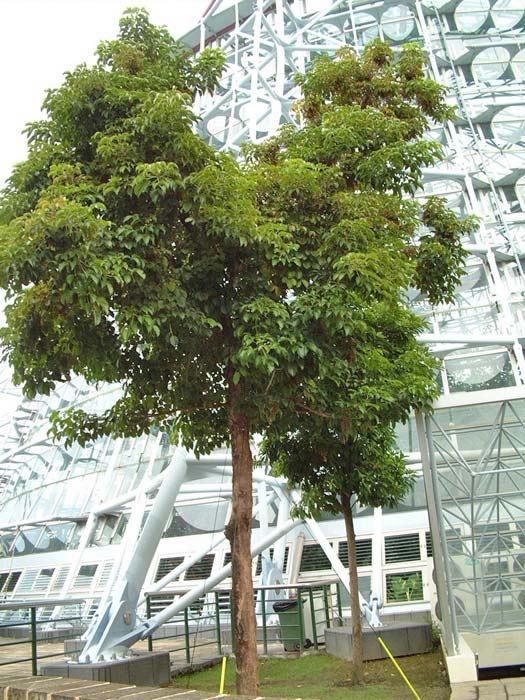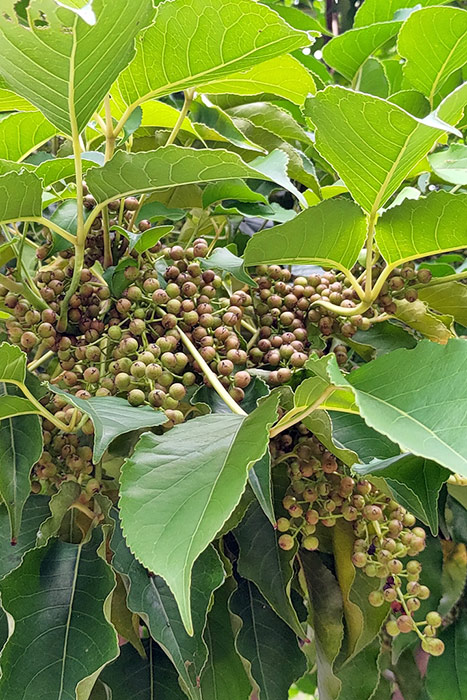Bischofia javanica
In the Coral Atoll and the Seasonal Rain Forest area of the Botanical Garden, you can see a large tree with thin, flaking, purplish-red bark. Its leaves are composed of three small leaflets that grow together, and it is called the toog tree. This tree is very representative of Taiwan's local culture, and in many settlements there are old trees over a hundred years old, which the residents regard as deities and worship. The shade of the tree often serves as a gathering place for the village elders or a play area for children. In the wild, the toog trees typically grow in humid valleys of mountainous areas below an elevation of 800 meters. It is a major species in tropical and subtropical evergreen monsoon rain forests. Young trees can tolerate slightly lower light conditions and grow particularly well in deep, moist, and fertile soil.
The male and female flowers of the toog tree bloom on different trees, making it a dioecious plant. The male trees produce flowers but do not bear fruits, while the female trees bloom and bear fruits. If you see fruits on the tree, it indicates that this toog tree is female. The toog fruit serves as food for many animals, including birds, and when the fruits are ripe in the Botanical Garden, they often attracts many birds foraging for food.
In addition to being revered as a sacred tree when it is old, the toog tree is commonly planted along riverbanks or used as a street tree in Taiwan. For Taiwanese people, the toog tree is also a widely used plant. Its fruits can be pickled and eaten. The leaves can be used to make a nourishing chicken soup. The wood is highly resistant to moisture and can be utilized for furniture, construction, bridges, vehicles, shipbuilding, mine supports, and railroad ties. The bark can be used to extract a red dye. The roots, bark, and leaves have medicinal properties.

